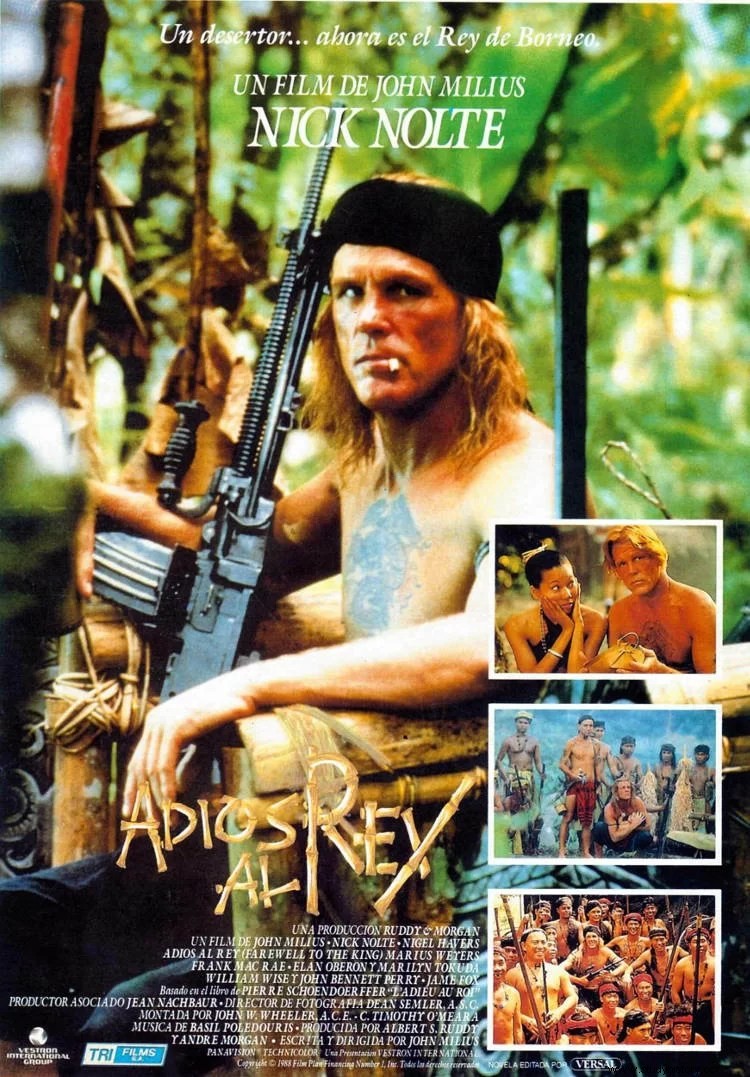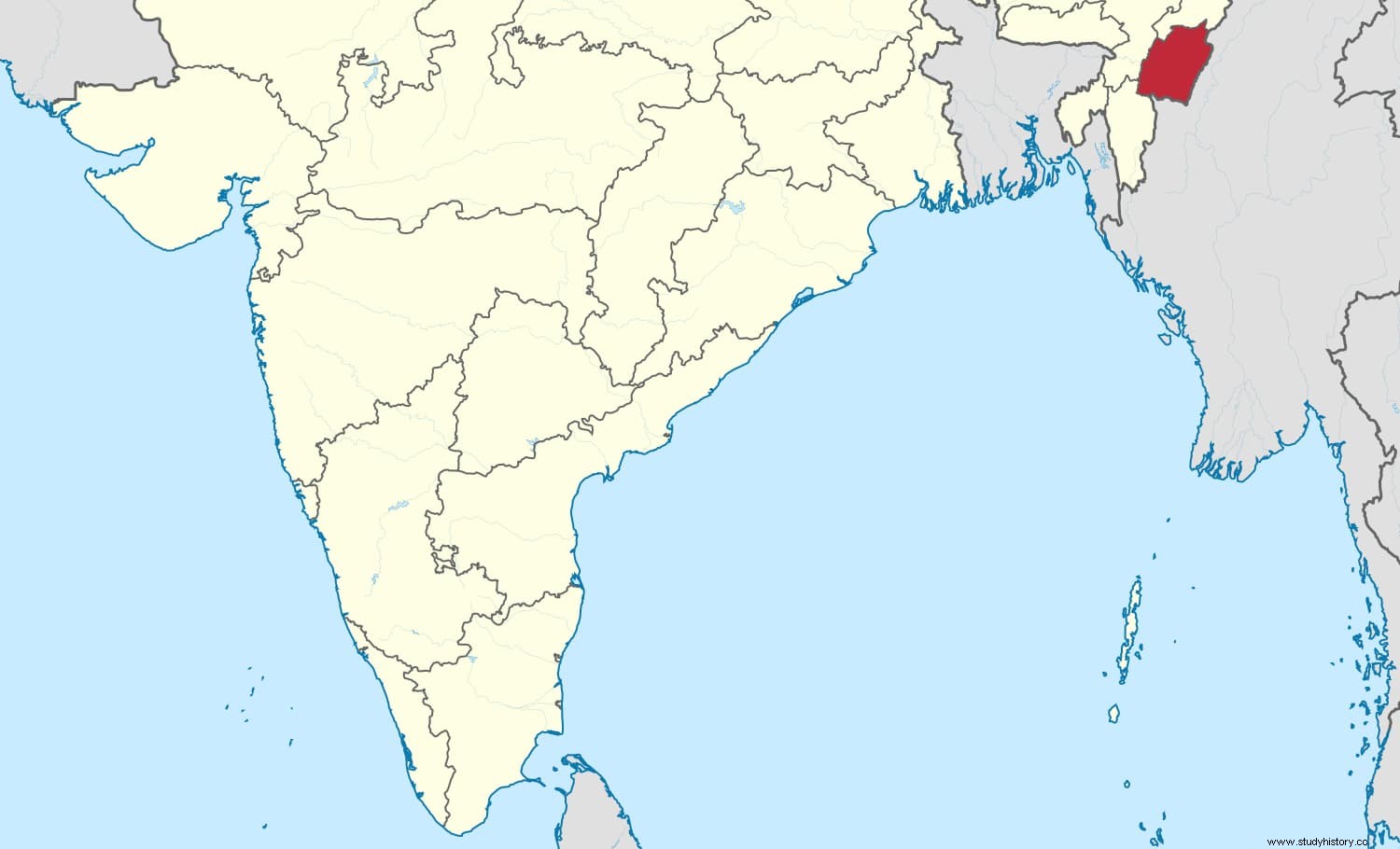In the movie Farewell to the King (Farewell to the king), directed by John Milius in 1988, Nick Nolte plays an American soldier who, fleeing the Japanese invasion of the Philippines, ends up in Borneo. There he stays to live with the Dayaks and ends up being their king, leading the resistance on the island against the arrival of the Japanese. The story adapts a novel, but it is inspired by a true event that a woman played during World War II:Ursula Graham Bower, an anthropologist who turned the Naga (people of Southeast Asia) into guerrilla fighters under her command.
Ursula was not only not in the military, but she did not even have an academic background. She was a simple amateur who had not been able to fulfill her dream of studying archeology at Oxford - she lived very close to her, in Blewbery - due to the economic limitations of her family. The daughter of Royal Navy Commander John Graham Bower, she was born in England in 1914 and attended the Roedean School, a Brighton girls' boarding school that included preparation for university entrance, though she was unable to take that final step. Instead, in 1932 her father married a second time with a woman who would somehow reorient her future.
It was about Barbara Euphan Todd, practically unknown in Spain but in English-speaking countries she was a famous writer of children's stories, creator of a popular character:Worzel Gummidge, a scarecrow who comes to life and becomes friends with the children of the farm where it is, characterized by its collection of interchangeable heads. As John also wrote (fiction and essay, under the pseudonym Klaxon ), even collaborating with his wife on the novel The Touchstone , the atmosphere of that home was eminently literary and Ursula could not escape it.

Traveling and writing began to take shape in the young woman's mind after a visit to Canada. But her friendship with Alexa MacDonald, whom she met during a vacation on the Scottish island of Skye, was decisive. In 1937, Alexa invited her to go with her to Manipur (a region in the far east of India, now bordering Myanmar) to see her brother, who was stationed in Imfal (the capital) because he worked for the Indian Civil Service. Ursula obtained the permission of her parents, who hoped that perhaps in this way she would find a husband and settle down, renouncing her aspiration to see the world.
But just the opposite happened; she discovered the Naga hills and fell in love with them and their people. It is a mountain range that serves as a natural border between the current Indian state of Nagaland and the Burmese region of Sagaing, and which then constituted a district of British India called the same, Naga Hills. Characterized by an abrupt orography, it is inhabited by the Naga people (or Naka, in Burmese), a word that can be translated as people with pierced ears . They are a group of tribes with a common culture and traditions, who speak various Sino-Tibetan dialects and bear cultural similarities to the Wa people of the Chinese region of Yunnan.
Ursula returned to her country, but only to prepare a new trip with her Leica and color film camera, ready to seek medical assistance, as well as documenting what life was like for the Naga and reflecting on her experience. in a book. And so, although he had no anthropology studies, he settled with them in a village called Laisong, in the North Cachar Hills (today Dima Hasao), gaining the trust of its inhabitants and carrying out valuable fieldwork that would lead to a a thousand photos, several films and a couple of monographs, one on the Naga and the other on the Apatani (a tribe from the Ziro Valley, in Araunachal Pradesh).
Of course, she needed the explicit permission of the administration because the war had broken out. Probably she did not imagine that the hostilities would reach there, but it happened and she would be forced to change the pen for the Sten MK II, the usual endowment submachine gun in the British army, since in 1942, after taking over practically all of Southeast Asia, The Japanese invaded Burma and the next target in their sights was India. Given her ancestry with the naga (she was nicknamed Naga Queen , something she hated), the authorities asked Ursula to convince them to form a local armed force to stop or at least hinder the advance of the enemy through the jungle.

The war was not a world that was totally alien to him, first because they had already been fighting for four years; second because, as we saw, she was the daughter of a soldier and her father had trained her in shooting practice; and third, because her stepmother had served in the VAD (Voluntary Aid Detachment, a civilian nursing unit that assisted in field hospitals, two-thirds of which was made up of women) during the First World War. So she, Ursula, accepted the commission and organized a small body of guerrilla fighters with a hundred and a half nagas.
We said before that, in Milius's film, the protagonist becomes the king of the Dayaks. These had gained fame fighting James Brooke, the famous white rajah of Sarawak, who managed to defeat them and abolish their traditional custom of cutting off the heads of enemies and keeping the skulls as trophies, which however lasted until the 1950s. Something that the Naga also practiced and it is not surprising, since both peoples -and others from the Philippines and Sumatra- were culturally related (another example would be the taste for body tattoos) and, likewise, they offered tenacious resistance to British rule, especially the Angami tribe, throughout the 19th century.
From 1878, once they gave in to the superiority of the British Empire, they integrated and remained faithful to it, to the point that two thousand Nagas contributed their grain of sand fighting on the Western Front during the First World War. Their descendants took over from them in that next battle, but not without problems, since the meager number recruited barely seemed to be of use to cover the more than two thousand square kilometers of mountainous jungle in their charge. Even less considering that they had nothing but the ancient rifles they used for hunting, some of them muzzle-loading muskets.
That's why reinforcements and equipment were sent to them. And so, armed with the aforementioned Sten Mark II, what was called the Bower Force gave the surprise by driving the Japanese operating in the area crazy, laying ambushes and turning the roads and paths that connected Burma with India into roads of safe escape for thousands of people, including refugees, downed pilots, escaped prisoners, etc. So effective was the force created by Ursula - who went into combat personally - that the enemy, stopped at Kohima and Imfal, put a price on her head. But she never managed to catch her and her exploits, duly publicized by Allied propaganda, were even published in a cartoon titled Jungle Queen , in the American magazine True Comics .
The war completely changed her life in several ways. In the first place, because it was in this context that she met the man she would marry in 1945:Frederick Nicholson Betts, alias Tim, a man eight years her senior who had spent his entire life between Ceylon and India and who, when the conflict broke out, was sent to Eritrea until his destination to the Burma Campaign as a lieutenant colonel of the V Force, the guerrilla and intelligence unit in which the Bower Force had been framed. Second, because she went from being an amateur anthropologist to a laureate of the Lawrence Memorial Medal (an academic award named after another character who combined history, archeology and military, Lawrence of Arabia), apart from joining the Order of the British Empire and receive, in 1950, a BA in Anthropology from the University of London.
By then she had already returned to Britain, India gaining independence from her. In the years leading up to this, Ursula and her husband had worked together in the Subansiri region, defending the claims of local people against the British government, and later settled in Kenya to grow coffee. Tim, who was a renowned ornithologist, worked as a veterinarian in the Western Maasai Reserve. But also in that country the post-colonial pro-independence effervescence arose and the couple chose to leave just before the Mau-Mau Rebellion broke out.
They moved to the Scottish island of Mull, where they had a farm called Ardura and where they raised their two daughters, Catriona and Alison (who would later also study at the Roedan School and go to university). Ursula passed away in 1988, at the age of seventy-four, fifteen after her husband. Her eldest daughter, married to an Indian businessman, authorized playwright Chris Eldon Lee to write a play entitled Ursula:Queen of the Jungle .
